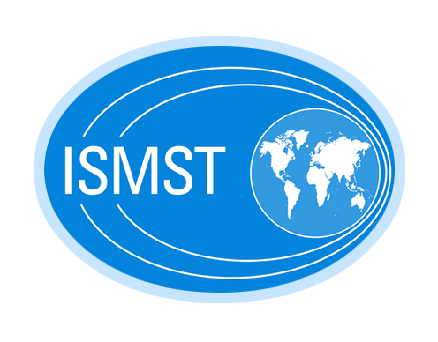About ESWT
Indications
1. Approved standard indications
1.1. Chronic Tendinopathies
1.1.1. Calcifying tendinopathy of the shoulder
1.1.2. Lateral epicondylopathy of the elbow (tennis elbow)
1.1.3. Greater trochanter pain syndrome
1.1.4. Patellar tendinopathy
1.1.5. Achilles tendinopathy
1.1.6. Plantar fasciitis, with or without heel spur
1.2. Bone Pathologies
1.2.1. Delayed bone healing
1.2.2. Bone Non-Union (pseudarthroses)
1.2.3. Stress fracture
1.2.4. Avascular bone necrosis without articular derangement
1.2.5. Osteochondritis Dissecans (OCD) without articular derangement
1.3. Skin Pathologies
1.3.1. Delayed or non-healing wounds
1.3.2. Skin ulcers
1.3.3. Non-circumferential burn wounds
1.3.4. Cellulite
2. Common empirically-tested clinical uses
2.1. Tendinopathies
2.1.1. Rotator cuff tendinopathy without calcification
2.1.2. Medial epicondylopathy of the elbow
2.1.3. Adductor tendinopathy syndrome
2.1.4. Pes-Anserinus tendinopathy syndrome
2.1.5. Peroneal tendinopathy
2.1.6. Foot and ankle tendinopathies
2.1.7. Trigger Finger
2.2. Bone Pathologies
2.2.1. Bone marrow edema
2.2.2. Osgood Schlatter disease: Apophysitis of the anterior tibial tubercle
2.2.3. Tibial stress syndrome (shin splint)
2.2.4. Knee Osteoarthritis
2.3. Muscle Pathologies
2.3.1. Myofascial Syndrome
2.3.2. Muscle sprain without discontinuity
2.4. Neurological Pathologies
2.4.1. Spasticity
2.4.2. Carpal tunnel syndrome
3. Exceptional indications – expert indications
3.1. Musculoskeletal pathologies
3.1.1. Osteoarthritis
3.1.2. Dupuytren disease
3.1.3. Plantar fibromatosis (Ledderhose disease)
3.1.4. De Quervain disease
3.1.5. Trigger finger
3.2. Neurological pathologies
3.2.1. Spasticity
3.2.2. Polyneuropathy
3.2.3. Carpal Tunnel Syndrome
3.3. Urologic pathologies
3.3.1. Pelvic chronic pain syndrome (abacterial prostatitis)
3.3.2. Erectile dysfunction
3.3.3. Peyronie disease
3.4. Others
3.4.1. Lymphedema
4. Experimental Indications
4.1. Heart Muscle Ischemia
4.2. Peripheral nerve lesions
4.3. Pathologies of the spinal cord and brain
4.4. Skin calcinosis
4.5. Periodontal disease
4.6. Jawbone pathologies
4.7. Complex Regional Pain Syndrome (CRPS)
4.8. Osteoporosis
Contraindications
Absolute contraindications: radial pressure waves (RPW) and/or focused shockwaves with low energy:
1.1. Malignant tumor in the treatment area (not as underlying disease)
1.2. Fetus in the treatment area
Relative contraindications:
1.3. Epiphyseal plate in the treatment area
1.4. Brain or Spine in the treatment area
Absolute contraindications with high energy focused waves:
1.5. Lung tissue in the treatment area
1.6. Malignant tumor in the treatment area (not as underlying disease)
1.7. Severe coagulopathy
1.8. Fetus in the treatment area
Consensus statement Recommendations for the use of extracorporeal shockwave technology in medical indications
Terms and definitions»
Download the Consensus statement»
Abstracts
Extracorporeal generated shock waves have been introduced for medical therapy approximately 20 years ago to disintegrate kidney stones. Since this time shock waves have changed the treatment of urolithiasis substantially. Today shock waves are the first choice to treat kidney and ureteral stones. A new indication in Urology is the shock wave treatment of IPP where first clinical investigations show promising results. Urology is not the only medical field for shock waves in medicine. Meanwhile shock waves have used in Orthopedics and Traumatology to treat insertion tendinitis, non- or delayed unions, avascular necrosis of the head of femur and other necrotic bone alteration. Another field of shock wave application is the treatment of tendons, ligaments and bones on horses in veterinary medicine. The idea of the shock wave therapy for orthopedic diseases is the stimulation of healing processes in tendons, surrounding tissue and bones. This is a completely different approach compared to urology where shock waves were used for disintegration. This paper gives an overview of basic physical principles of shock waves, history and basic research of shock wave application in medicine.
Introduction and prerequisites and minimal standards of performing ESWT
In order to prevent improper treatment, the following list contents the minimum prerequisites and standard examinations performing ESWT:
- Clinical examination
- Radiological imaging
- Neurological and/or laboratory-diagnostic tests and/or other investigations may be necessary to corroborate the diagnosis.
Only a qualified physician (certified by National or International Societies) may use focused shockwave therapy to treat pathologies, which have been determined by diagnostic testing.
For the treatment on bones, a high-energy, focused shockwave with positioning technology has to be used.
In accordance with most scientific evidence ISMST recommends to use focused generators and high energy levels to treat calcifications.
To treat superficial soft tissue conditions, devices with or without focusing technology may be utilized; close attention must be paid to the depth of penetration of the shockwave source when treating deep tissue structures.
Contact us
Call Us
+43 (650) 2332059
Email Us
shockwave@ismst.com
Our Location
Ebelsberger Schlossweg 5
A-4030 Linz / Austria
